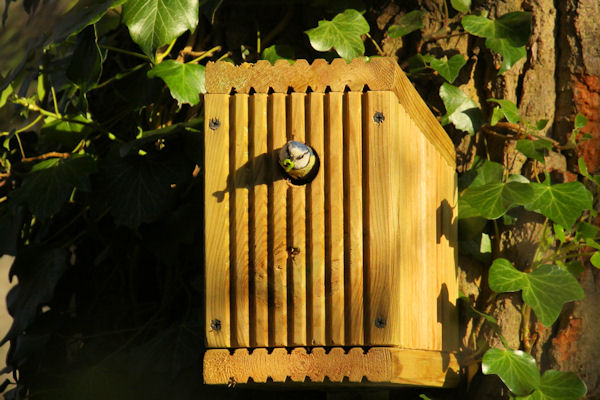Lesser Redpoll in Bicknor Wood
The Lesser Redpoll, Acanthis cabaret, is a common breeding bird in the UK, but not widely known outside of the bird watching community. It is small and relatively quiet, so is often overlooked. It also reserves its visits to Bicknor Wood for the colder months when fewer people are likely to be looking for it.
A flock of around 30 birds has been seen in the wood since the end of December, sometimes splitting up into smaller flocks of 5-10 individuals.
Look in the tops of the silver birch trees, particularly in the area between the gate on Gore Court Road and the fork in the path. With binoculars and good light, you might be able to see the red forehead and small, yellow bill with black around the base. You may also see a pale crescent on the back caused by the light tips of the feathers lining up when the wing is folded.
For those who like to know these things, the feathers in the wing are grouped to allow for easy folding and the group in this case that fold to form the crescent are known as the greater coverts.

Without binoculars, you might be able to distinguish a small, mostly brown bird with a light belly and streaking on the flanks. Most striking, especially in silhouette, is the deeply forked tail.
They feed acrobatically from the hanging seed clusters of the birch and a large flock will cause a shower of spent seed cases to drift down onto spectators below. They could also be seen in other trees such as the oaks where they strip the new buds.

They breed further north in the UK and return south during the winter to take advantage of the milder conditions. The leafless trees make it easy to find them, but the poor light conditions can sometimes make them difficult to identify accurately. To prove the point, the generic portion of their scientific name, Acanthis (often italicised), comes from the Ancient Greek meaning "tricky little sucker". The species element of the name, cabaret (never capitalised), comes from the French for "pfff, a finch maybe?" usually given with a gallic shrug.
In case you are interested in the taxonomic history of the Lesser Redpoll (and let's face it, who isn't?), they were recently separated from the Common, or Mealy Redpoll, with whom they had previously shared the name as sub-species. They had a 3-element scientific name to distinguish them, Acanthis flammea flammea for the Common Redpoll and (we can abbreviate here) A.f.cabaret for the Lesser Redpoll.
Ornithological taxonomic protocol dictates that the type-specific (first described) maintains the original name and the new species promotes its sub-special title to species level.
Thus we now have Common Redpoll, Acanthis flammea and Lesser Redpoll, Acanthis cabaret.
If only it were that simple.
To muddy the waters even further, you may hear them referred to by the scientific name Carduelis cabaret. As in many scientific disciplines, there is a failure to agree across the board and some groups cling to their own version of family relationships. Even in broad agreement, some camps are quicker to update than others, leaving an uncertainty overlap. To maintain a consistency I have gone with the Clements Checklist taxonomy, widely accepted and used by eBird.org. Right or wrong, I have used it for years and am stuck with it now.
Following, are links to the RSPB's Lesser Redpoll page and the flashier eBird.org's version.
Best of luck.





Comments
Post a Comment